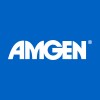
Total Marrow and Lymphoid Irradiation, Fludarabine, and Melphalan Before Donor Stem Cell Transplant...
Acute Lymphoblastic LeukemiaAcute Lymphoblastic Leukemia in Remission6 moreThis phase I studies the side effects and best dose of total marrow and lymphoid irradiation when given together with fludarabine and melphalan before donor stem cell transplant in treating participants with high-risk acute leukemia or myelodysplastic syndrome. Giving chemotherapy, such as fludarabine and melphalan, and total marrow and lymphoid irradiation before a donor stem cell transplant helps stop the growth of cells in the bone marrow, including normal blood-forming cells (stem cells) and cancer cells. When the healthy stem cells from a donor are infused into the patient they may help the patient's bone marrow make stem cells, red blood cells, white blood cells, and platelets.

Mepolizumab for the Treatment of Chronic Spontaneous Urticaria
Chronic Spontaneous UrticariaThis is an exploratory study designed to generate preliminary data in evaluating the efficacy of Nucala in the treatment of chronic spontaneous urticaria.

RCT Comparing Autologous Hematopoietic Stem Cell Transplantation Versus Alemtuzumab, Cladribine...
Multiple SclerosisThis study is a randomized multicentre, multinational, treatment interventional study of RRMS patients with breakthrough inflammatory disease activity in spite of ongoing standard immunomodulatory medication. The study has two treatment arms; arm A: HSCT (hematopoietic stem cell transplantation) and arm B: alemtuzumab, cladribine or ocrelizumab. A pre-planned 3-year follow-up extension period will be performed depending on future funding. The aim of the study is to assess the effectiveness and side effects of a new treatment intervention in RRMS; HSCT, and, thereby, the value of HSCT in clinical practice. Data from recently published patient series indicate that HSCT may have a significantly higher treatment effect than currently registered RRMS immunomodulatory treatments. This study will determine the relative role of HSCT versus alemtuzumab, cladribine or ocrelizumab.

A Safety, Tolerability and Efficacy Study of Sernova's Cell Pouch™ for Clinical Islet Transplantation...
Type 1 Diabetes MellitusThe Cell Pouch™ is a novel implantable device, that is transplanted with therapeutic cells such as insulin producing islets. This combination product is designed for the treatment of Type 1 Diabetes Mellitus (T1D) with hypoglycemia unawareness and a history of severe hypoglycemic episodes. Upon implantation, the Cell Pouch is designed to form a natural environment, rich in tissue and microvessels for the transplant and function of therapeutic cells. The Cell Pouch is designed as a scaffold made of non-degradable polymers, formed into small cylindrical chambers which, when implanted against the abdominal muscle, becomes incorporated with vascularized tissue to the circumference of removable plugs within as early as two weeks as demonstrated in preclinical studies. After the tissue incorporation, the plugs are removed, leaving fully formed tissue chambers with central void spaces for the transplantation of therapeutic cells including Islets of Langerhans (islets). The Cell Pouch forms a natural environment, rich in microvessels that allows the transplanted islets to engraft. It is believed this engraftment will enable long-term survival and function of transplanted islets. This study aims to demonstrate the safety and tolerability of islet transplantation into the Cell Pouch for the treatment of T1D in subjects with hypoglycemia unawareness and a history of severe hypoglycemic episodes. The study also aims to establish islet release criteria that accurately characterize the islet product and are predictive of clinical transplant outcomes into the Cell Pouch, which will be demonstrated through defined efficacy measures.

Pediatric Hodgkin Lymphoma Treatment Trial With Low Cumulative Doses of Chemotherapy Agents and...
Pediatric Hodgkin's DiseaseThis trial proposes a therapy for pediatric Hodgkin lymphoma with the objective of achieving high levels of long lasting complete remission with less risk of late effects. Patients of both genders, between 2 and 18 years, with newly diagnosed classical Hodgkin lymphoma are admitted. Initial staging provides stratification in three groups: low, intermediate and high risk. An initial set of two chemotherapy courses is administered to all cases after which a new disease assessment is performed. According to disease response a final therapy group is assigned. Rapid early responders benefit from less chemotherapy. At the end of chemotherapy, radiotherapy is delivered only to patients who do not achieve a complete response. Thus therapy is tailored to initial extension and disease responsiveness. Complete responders at the end of chemotherapy do not receive radiotherapy. Those who are in partial remission receive low dose (30Gy) involved node radiotherapy. Stable or progressive disease at any moment is assumed as a trial failure and new therapeutic strategies are offered to patients off protocol. Chemotherapy is based upon regimes with well known effectiveness in Hodgkin lymphoma. (i.e. ABVD: doxorubicin, bleomycin, vinblastine and dacarbazine and ESHAP: Etoposide, methyl prednisolone, citarabine and cisplatin). The schedules are delivered with low cumulative drug doses and avoiding the use of toxic alkylating agents. Risks of secondary leukemia and infertility are thus minimized. Doxorubicin and bleomycin do not achieve cumulative doses that may expose to significant risk of heart or lung damage. Radiotherapy reduction avoids late radiation sequels. This clinical study proposes a therapeutic approach based on chemotherapy that do not sum up high cumulative toxic doses. Therapy is tailored according to initial risk assessment and disease responsiveness. Those who achieve a complete response to chemotherapy do not receive additional radiotherapy, thus avoiding further late effects.

TCRαβ-depleted Progenitor Cell Graft With Additional Memory T-cell DLI, Plus Selected Use of Blinatumomab,...
Acute Lymphoblastic Leukemia (ALL)Acute Myeloid Leukemia (AML)6 morePatients less than or equal to 21 years old with high-risk hematologic malignancies who would likely benefit from allogeneic hematopoietic cell transplantation (HCT). Patients with a suitable HLA matched sibling or unrelated donor identified will be eligible for participation ONLY if the donor is not available in the necessary time. The purpose of the study is to learn more about the effects (good and bad) of transplanting blood cells donated by a family member, and that have been modified in a laboratory to remove the type of T cells known to cause graft-vs.-host disease, to children and young adults with a high risk cancer that is in remission but is at high risk of relapse. This study will give donor cells that have been TCRαβ-depleted. The TCR (T-cell receptor) is a molecule that is found only on T cells. These T-cell receptors are made up of two proteins that are linked together. About 95% of all T-cells have a TCR that is composed of an alpha protein linked to a beta protein, and these will be removed. This leaves only the T cells that have a TCR made up of a gamma protein linked to a delta protein. This donor cell infusion will be followed by an additional infusion of donor memory cells (CD45RA-depleted) after donor cell engraftment. This study will be testing the safety and effects of the chemotherapy and the donor blood cell infusions on the transplant recipient's disease and overall survival.

Allogeneic Stem Cell Transplantation in Relapsed/Refractory T-, NK/T-cell Lymphomas
T-cell Non-Hodgkin LymphomaLymphoma1 moreRelapsed and refractory T-cell lymphomas have been reported to have dismal outcomes. The role of allogeneic stem cell transplantation have been demonstrated in these patients. This clinical trial is studying the efficacy and safety of busulfan plus fludarabine as conditioning therapy followed by allogeneic stem cell transplantation (Allo-SCT) in T- and NK/T-cell lymphoma patients who have relapsed or are refractory to previous chemotherapies including autologous transplantation.

A Randomized Multicenter Study for Isolated Skin Vasculitis
Primary Cutaneous VasculitisCutaneous Polyarteritis Nodosa2 moreMulti-center sequential multiple assignment randomized trial comparing the effectiveness of three different standard of care treatment options for patients with isolated skin vasculitis.

Myasthenia Gravis Inebilizumab Trial
Myasthenia GravisRandomized, double-blind, placebo-controlled, Phase 3, parallel-group study with optional open-label extension.

A Study of Subcutaneous Blinatumomab Administration in Acute Lymphoblastic Leukemia (ALL) Patients...
B Cell Precursor Acute Lymphoblastic LeukemiaThe study aims to evaluate the safety, efficacy, and tolerability of subcutaneous (SC) blinatumomab for treatment of Acute Lymphoblastic Leukemia (ALL), to determine the maximum tolerated dose (MTD), and recommended phase 2 dose(s) (RP2D) of SC administered blinatumomab. It will also conduct a clinical PK evaluation of SC1 and SC2 blinatumomab formulations.
